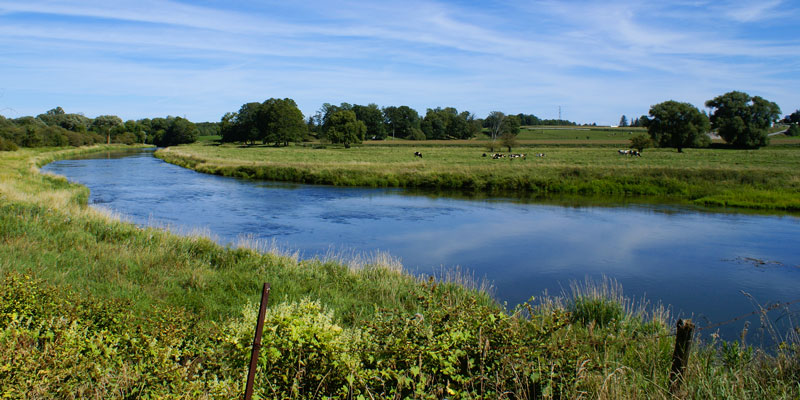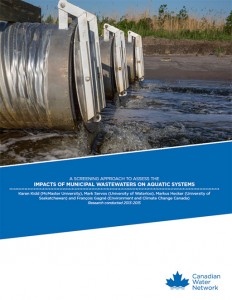Application and Assessment of Tools to Determine the Level of Concern of Emerging Contaminants from Municipal Wastewater Effluents on Aquatic Biota in the Grand River
Mark Servos, University of Waterloo (2013-2015)

Challenge
Treated municipal wastewater has the potential to contain emerging substances of concern (ESOCs), which have been known to have disruptive impacts on the endocrine system of aquatic organisms. The endocrine system is a collection of glands that produce hormones to regulate metabolism, growth, sexual function, development and reproduction, among other things. Disruptions to the endocrine system can result in impacts such as the feminization of male fish, as well as embryonic deformities.
Tools have been developed to identify indicators of endocrine impacts on organisms, but these tools need to be assessed for effectiveness. There is a need to understand the effects of wastewater ESOCs at multiple levels of the food web, including prey, predators and massive predators, both on a molecular scale and on the population as a whole.
Project
The project team, led by Dr. Mark Servos, evaluated the efficacy of a suite of tools (i.e. a toolbox) designed to assess the endocrine-related responses of fish species when exposed to wastewater effluent. This suite of tools was tested through field work at three sites within the Grand River watershed in southern Ontario. The sites were located at the outflow of treated wastewater, representing high, moderate and low effluent concerns. Additionally, each site had a reference site to compare outflow and non-outflow conditions.
- The tools looked at several exposure and effect indicators across several levels of biological organization (i.e. molecular to population).
- Collected fish were measured and weighed, and their overall condition was assessed.
- Sex ratio, spawning, fertilization and hatching success were measured at each site. Steroidogenesis studies were also executed.
- A suite of molecular markers were used to improve assessment of the biological impacts of municipal wastewater plant effluents. Stable isotopes were used to measure the presence of effluent in fish tissues and the movement of fish.
- Water samples were taken to measure the presence and concentration of estrogen effluent.
- Indicator compounds were used to measure the presence of ESOCs in the effluent.
The results of this assessment were synthesized into a series of recommendations with regard to the future application of these tools.
Outputs
- A Grand River Watershed Forum was hosted to highlight the project’s findings with the partners and other stakeholders.
- Mini-workshops were held with the project’s partners and plant operators.
- Members of the team participated in conferences, workshops and peer reviewed publications.
Outcomes
- Knowledge generated regarding the risks that various wastewater treatment options pose on aquatic ecosystems have been used to inform and support decision making and practice.
- Changes in practice occurred with regard to the use of the suite of tools.





